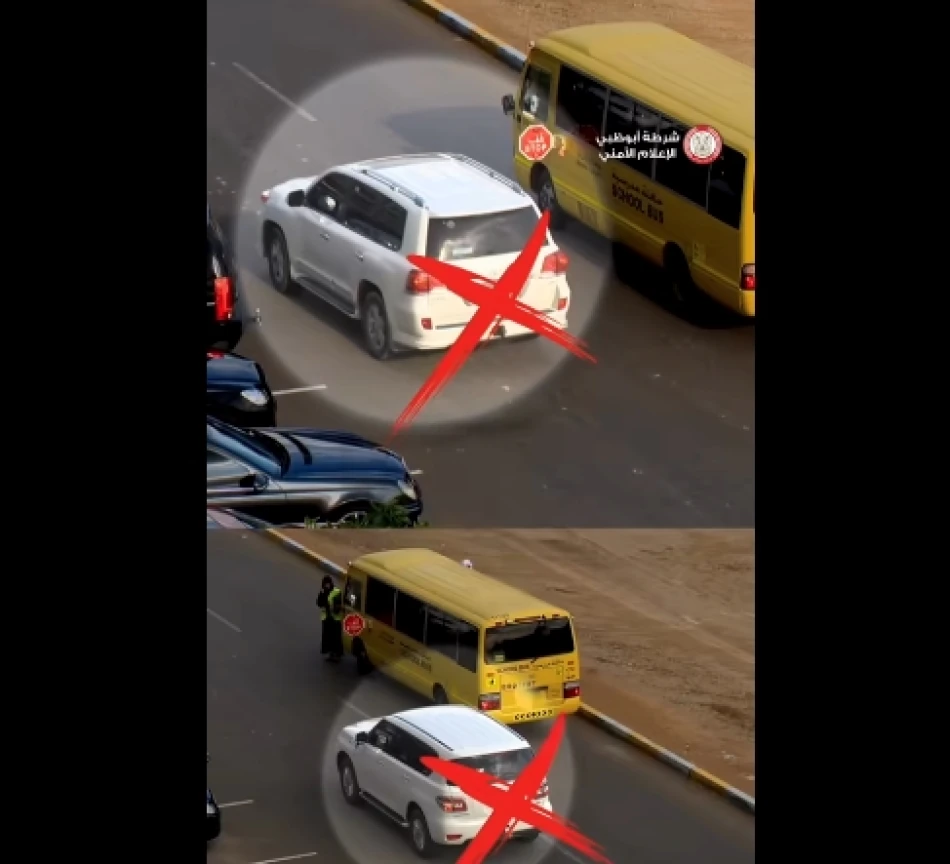
Abu Dhabi Police Urges Drivers to Stop for School Bus 'Stop' Signs
UAE Cracks Down on School Bus Safety Violations with Heavy Fines and Traffic Points
Abu Dhabi Police have intensified enforcement of school bus safety regulations, warning drivers they face steep penalties of 1,000 dirhams ($272) and 10 traffic points for failing to stop when school buses deploy their "stop" arm signals. The crackdown reflects growing regional emphasis on child safety amid rapid urbanization and increasing traffic density across the Emirates.
Strict Distance Requirements Target Driver Behavior
The new enforcement guidelines mandate that all vehicles in both directions must come to a complete stop at least five meters away from school buses when their side stop arms are extended. This distance requirement goes beyond basic stopping rules, creating a protected zone around children as they board and disembark.
The 10-point penalty is particularly significant in the UAE's traffic system, where accumulating points can lead to license suspension or mandatory safety courses. For context, running a red light typically carries 12 points, placing school bus violations in the same serious category as major traffic infractions.
Regional Safety Standards Lag Behind Global Best Practices
While the UAE's approach mirrors safety protocols in countries like Canada and several U.S. states, the enforcement represents a notable shift for the Gulf region. Unlike North American school buses equipped with flashing lights and extending stop signs, many regional school transport systems have historically relied more on driver awareness than mechanical safety features.
The timing coincides with the UAE's Vision 2071 initiative, which prioritizes making the country the world's safest place to live. School zone safety has become a measurable benchmark for this broader national safety strategy.
Economic Impact on Transport Operators
For the UAE's substantial private school transport industry, these regulations create both compliance costs and competitive advantages. Companies investing in proper stop-arm equipment and driver training may gain market share, while those cutting corners face regulatory scrutiny.
The enforcement also signals to international schools and expatriate families—a crucial demographic in the UAE—that child safety infrastructure matches global standards. This matters for talent retention in the Emirates' knowledge-based economy transition.
Technology and Enforcement Convergence
Abu Dhabi's traffic enforcement increasingly relies on automated systems and camera networks, suggesting these school bus violations may soon be detected and fined electronically rather than requiring police presence. This technological approach has proven effective in reducing traffic fatalities across the UAE by approximately 35% over the past decade.
The broader implications extend beyond immediate safety concerns. As Gulf cities compete to attract international businesses and families, demonstrating robust child safety infrastructure becomes an economic development tool—one that Abu Dhabi appears determined to leverage through consistent, visible enforcement of protective regulations.
Most Viewed News

 Layla Al Mansoori
Layla Al Mansoori






